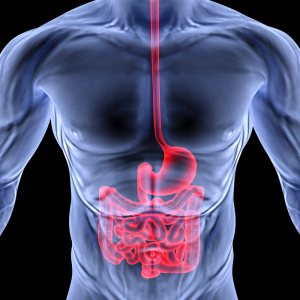The anatomy of the esophagus is complex. The esophagus (see esophagus picture here) stretches from the lower pharynx in the upper neck to the upper end of the stomach, just under the diaphragm. Here are some measurements regarding the various parts of the esophagus as they would be found in an average sized male during esophagoscopy.
Some facts about the esophagus
|
There are some important close anatomic relations to the surrounding tissues: for instance, the upper part of the cervical esophagus is situated behind the larynx (=voice box). The trachea and the aortic arch are placed in front of the lower end of the cervical esophagus. This proximity is so close that the specialist who does the esophagoscopy can see a depression about 23 to 25 cm from the incisors, caused by the aorta, that pulsates with the heart beat. The thoracic esophagus is covered in front by the heart muscle. This proximity is so close that in difficult cases of posterior wall heart attacks esophageal electrodes are used to get a better electrocardiogram recording.
At 38 cm from the incisors the esophagus passes through an opening in the diaphragm and this is the border between the thoracic and lower esophagus. A cancer in the thoracic esophagus will therefore metastasize into the chest cavity, whereas a cancer of the lower esophagus will spread first into the upper stomach area and next into the body cavity (=abdominal cavity).
References:
1. Cancer: Principles &Practice of Oncology.4th edition. Edited by Vincent T. DeVita, Jr. et al. Lippincott, Philadelphia,PA, 1993. Chapter 25. Cancer of the esophagus.
2. Cancer: Principles&Practice of Oncology. 5th edition, volume 1. Edited by Vincent T. DeVita, Jr. et al. Lippincott-Raven Publ., Philadelphia,PA, 1997. Cancer of the esophagus.
3. D Sharma J Indian Med Assoc 1999 Sep;97(9): 360-364.
4. MJ Roth et al. Cancer Res 2001 May 15;61(10):4098-4104.
5. K Schumacher et al. Cancer Res 2001 May 15;61(10):3932-3936.
6. M Tachibana et al. Virchows Arch 2001 Apr;438(4):350-356.
7. SJ Spechler et al. JAMA 2001 May 9;285(18):2331-2338.







